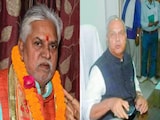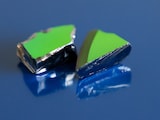Social media has many trends like "Sugar Detox" or "No Sugar Diet" on cutting down sugar, leaving many people confused as to whether it is really possible to quit sugar overnight and what are the risks and advantages. While the intention of these trends is good, cutting out sugar completely is rarely the best or the safest plan. This is because sugar itself is not the only driver of blood glucose. A rigid "no-sugar-ever" rule focuses on a single ingredient instead of the overall pattern that truly affects diabetes control.
Why Cutting Sugar Off Is A Bad Idea
All carbohydrates in our diet, including rice, rotis, fruits and milk are broken down into glucose in the body. Eliminating sugar while leaving the rest of the diet unchanged often leads to stress, frustration, rebound cravings, and poor adherence. For those on insulin or oral medications for diabetes, it can even increase the risk of hypoglycaemia (low blood sugar) if dosage is not adjusted.
Instead of the sugar intake, the focus should be on the total carbohydrate load, the fibre content, and what you eat alongside it. A bowl of sweetened breakfast muesli may spike glucose more than a smaller serving of mango eaten after a balanced meal. Likewise, a plate that's mostly refined carbohydrates like a white bread sandwich will raise blood sugar far more than a plate where carbs are paired with protein, healthy fats, and plenty of vegetables.
Tips For Diabetics Better Than "Cut Off Sugar"
So, what should you do instead?
1. Shift the goal from "zero sugar" to "low added sugar"
Added sugars are found in biscuits, sauces, flavoured yogurt, fruit juices, energy drinks, and even "healthy" bars. You must learn to read the labels and choose unsweetened versions. Rather than wasting it on every day, ultra-processed snacks, sweetened food should be kept for those rare occasions like festivals so you can then enjoy the small piece of mithai without feeling guilty.
2. Choose smart carbs and control portions
Go for whole grains such as millets, brown rice, oats. Ensure legumes and high-fibre vegetables are part of your meals. In a typical Indian meal, this may be two small phulkas with a generous helping of sabzi (vegetables), a bowl of dal or curd, and a small portion of rice if desired. This balance slows rise in glucose after the meal, keeps you fuller, and improves energy.
3. Time and pair your sweets
If you want dessert, have a small portion after a balanced meal, not on an empty stomach. Pairing sweets with protein or fat like a few nuts with a small piece of halwa can blunt the spike in sugar. Use simple rules like sharing a dessert, keeping it to three mindful bites, or having sweets on no more than two days a week.
Photo Credit: Pexels
4. Prefer whole fruit over fruit juice
Juice, even without added sugar, behaves like liquid sugar and causes rapid spikes. Whole fruit brings fibre, volume, and better satiety. Aim for one medium fruit serving at a time and avoid eating multiple high-glycaemic fruits in a single sitting.
5. Low- or no-calorie sweeteners should be used as a bridge, not a crutch
Stevia or monk-fruit sweetener in tea or coffee can help reduce added sugar. Use them in moderation while you retrain your palate to enjoy less sweetness overall. Be cautious with packaged "diet" foods; they can still be calorie-dense and highly processed.
6. Look beyond the plate
Brisk half-hour walks after meals, strength-training exercises, adequate sleep, hydration, and stress management all improve insulin sensitivity and smooth blood glucose curves. Many patients find that once these habits are in place, the urge for sweets fades and control improves without extreme restrictions.
A sustainable strategy to control sugar is about setting a routine and a pattern. This approach is safer and far more effective than an all-or-nothing ban. Remember, you do not have to live in fear of sugar; you have to be in charge of it!
(By Dr Mahesh Chavan, Consultant - Endocrinologist & Diabetologist, Apollo Hospitals Navi Mumbai)
Disclaimer: The opinions expressed within this article are the personal opinions of the author. NDTV is not responsible for the accuracy, completeness, suitability, or validity of any information on this article. All information is provided on an as-is basis. The information, facts or opinions appearing in the article do not reflect the views of NDTV and NDTV does not assume any responsibility or liability for the same.















